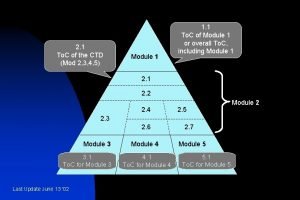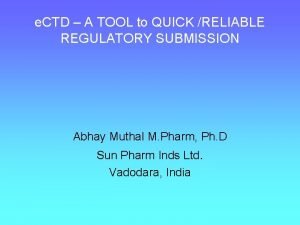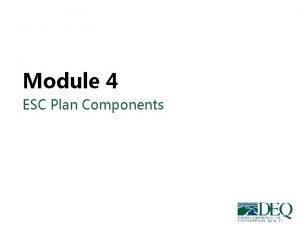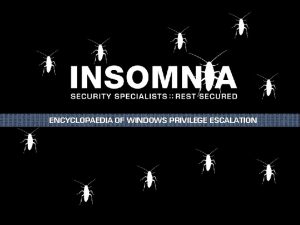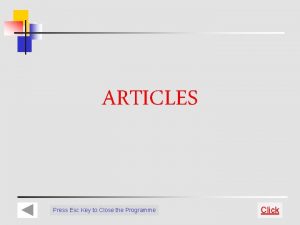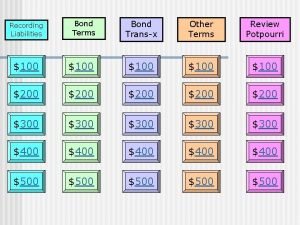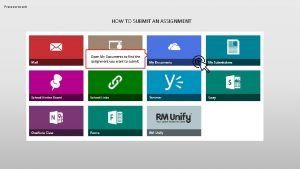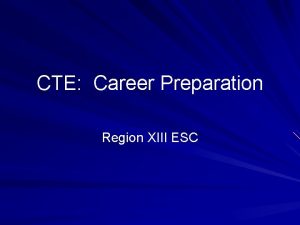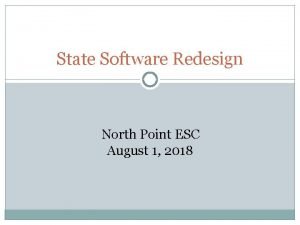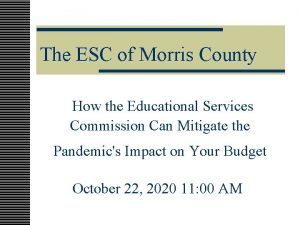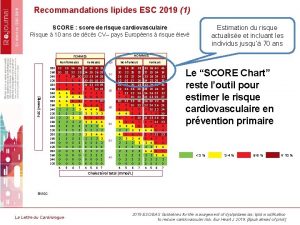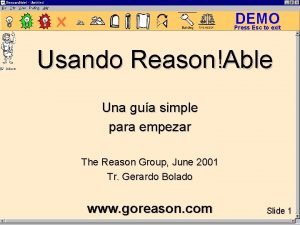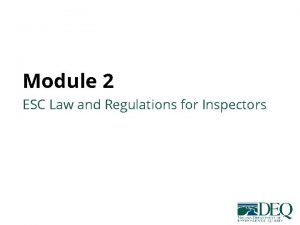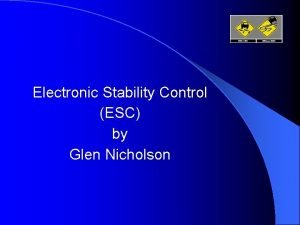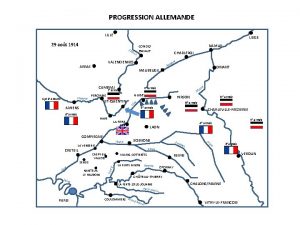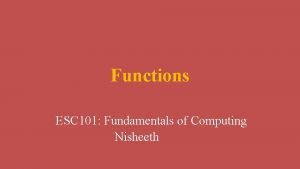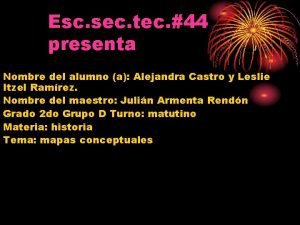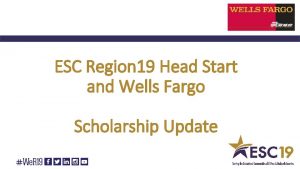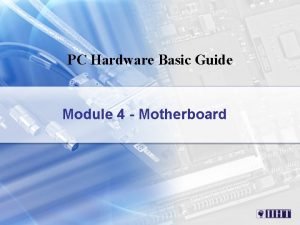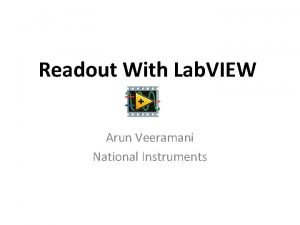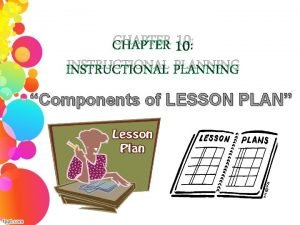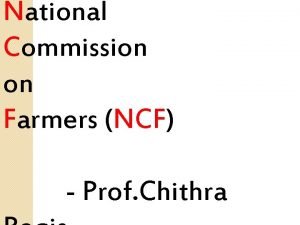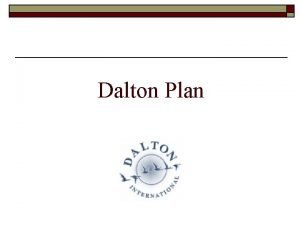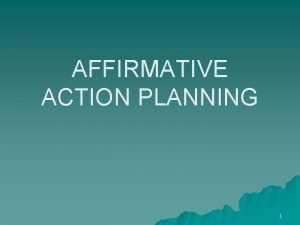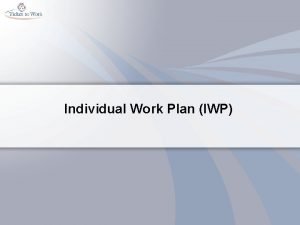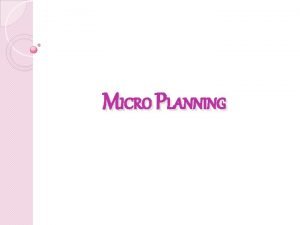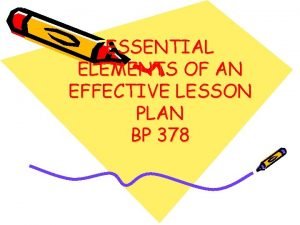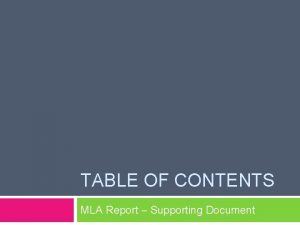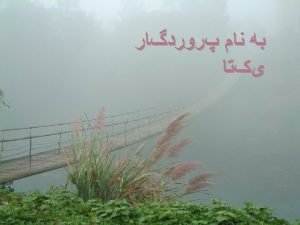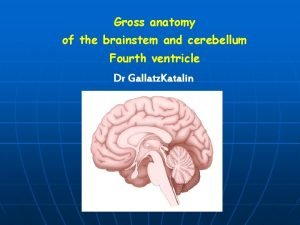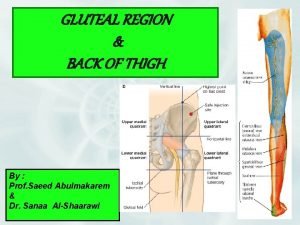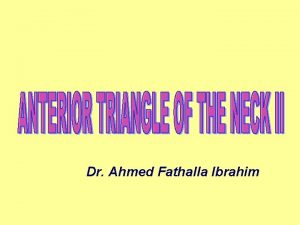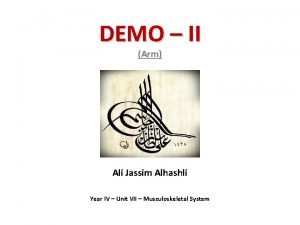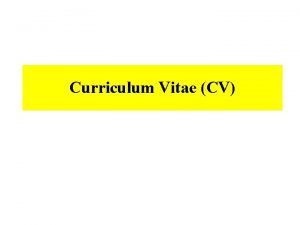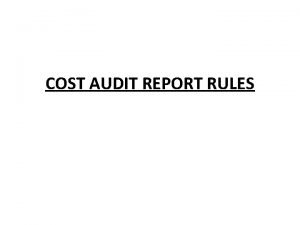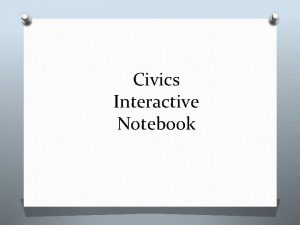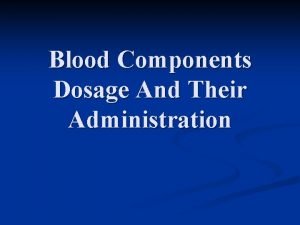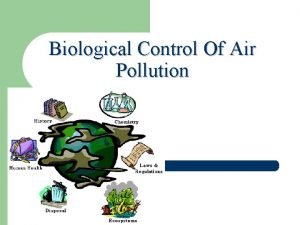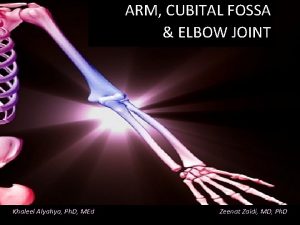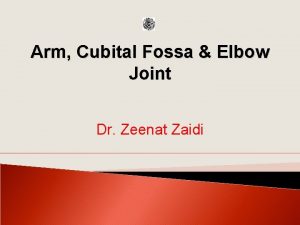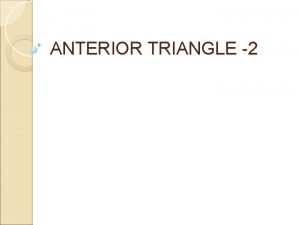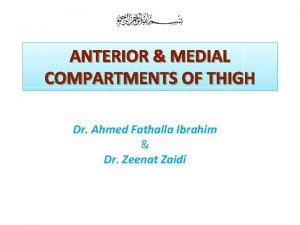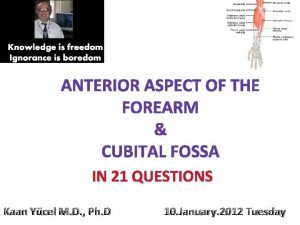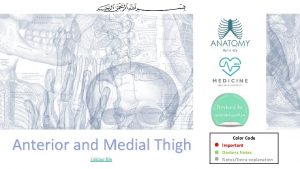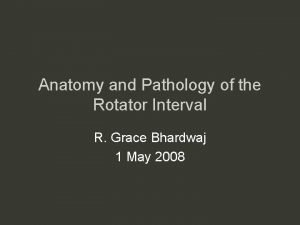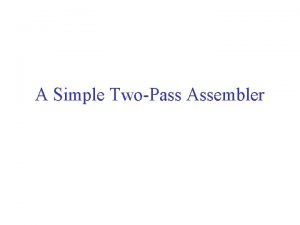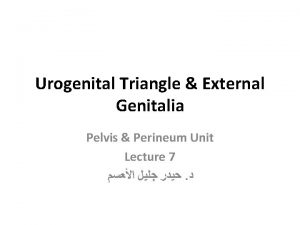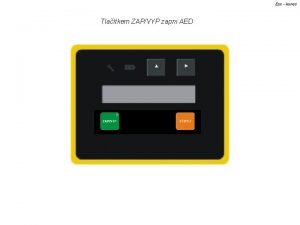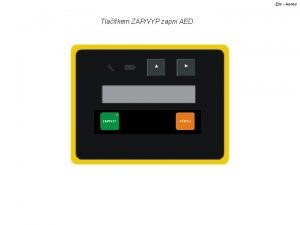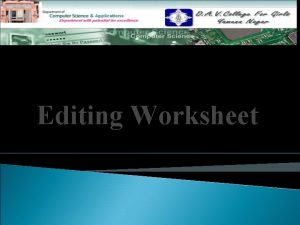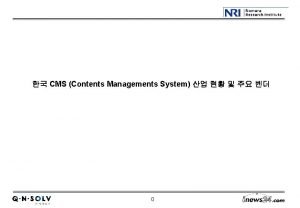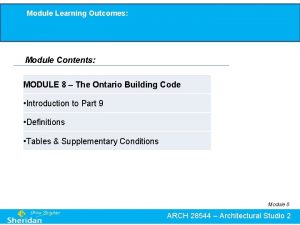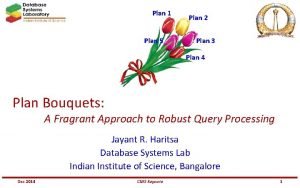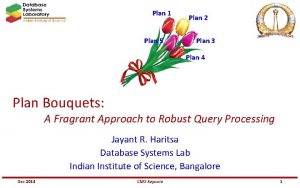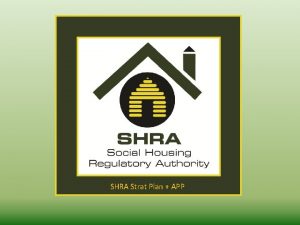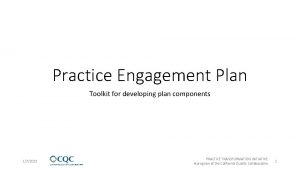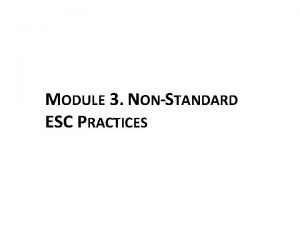Module 4 ESC Plan Components Module 4 Contents





























































































- Slides: 93

Module 4 ESC Plan Components

Module 4 Contents 4 a. ESC Plan Elements 4 b. Minimum Standards 4 c. Virginia ESC Handbook

Module 4 a. Erosion and Sediment Control Plan Elements

ESC Plans • Show to develop the site and the phasing of construction • Should be separate from the building construction drawings • Consists of two parts: 4 a. | ESC PLAN ELEMENTS | Pg. 3

ESC Plans • Narrative – written out project description • Illustrative – shows the project development drawn out on map sheets 4 a. | ESC PLAN ELEMENTS | Pg. 3

Module 4 b. Minimum Standards

Minimum Standards • Listed in the ESC regulations • State when and where ESC practices must be used • All VESCP authorities must require compliance • Incorporated in all ESC plans and implemented on all regulated LDAs 4 b. | MINIMUM STANDARDS | Pg. 6

Minimum Standards • Should be understood by the plan preparer, inspector, plan reviewer, and developer • Allows for equal enforcement and compliance across the state 4 b. | MINIMUM STANDARDS | Pg. 6

Minimum Standards Divided into different groups • Erosion control and soil stabilization • Sediment control • Slope protection • Channels, culverts, and outlets • Watercourses • Underground utilities • Construction entrances • Project completion • Post-construction stormwater management 4 b. | MINIMUM STANDARDS | Pg. 6

MS-1 Stabilization • Areas not at final grade – Stabilization must be applied within 7 days if area will remain dormant for more than 14 days – Permanent stabilization must be applied to areas that will be dormant more than 1 year 4 b. | MINIMUM STANDARDS | Pg. 7

MS-1 Stabilization • Areas at final grade – Permanent stabilization must be applied within 7 days 4 b. | MINIMUM STANDARDS | Pg. 7

MS-1

MS-1

MS-2 Stockpiles and Borrow Areas • Soil stockpiles and borrow areas shall be stabilized or protected with sediment trapping measures • Applies to on and off-site stockpiles and borrow areas 4 b. | MINIMUM STANDARDS | Pg. 8

MS-2

MS-3 Permanent Vegetation • A permanent vegetative cover shall be established on areas not otherwise stabilized • Permanent vegetation shall not be considered established until it is uniform, mature enough to survive, and will inhibit erosion 4 b. | MINIMUM STANDARDS | Pg. 9

MS-4 First-Step Measures (Perimeter Controls) • Sediment basins, traps, dikes, and sediment barriers intended to trap sediment shall be installed as a first step measure • They must be made functional before up-slope disturbance takes place 4 b. | MINIMUM STANDARDS | Pg. 10

MS-5 Earthen Structures • Stabilization measures shall be applied to earthen structures immediately after installation 4 b. | MINIMUM STANDARDS | Pg. 11

MS-5

MS-5

MS-6 Traps and Basins • Designed and constructed based on the total drainage area served by the trap or basin • Less than 3 acres for traps • Equal to or greater than 3 acres for basins 4 b. | MINIMUM STANDARDS | Pg. 12

MS-6 Traps and Basins • Capacity for traps and basins is 134 cubic yards per acre of drainage 4 b. | MINIMUM STANDARDS | Pg. 12

MS-6 a

MS-6 b

MS-7 Cut and Fill Slopes • Cut and fill slopes shall be designed and constructed in a manner to minimize erosion • Slopes found to be eroding excessively within one year shall have additional stabilization applied 4 b. | MINIMUM STANDARDS | Pg. 13

MS-7

MS-7

MS-8 Concentrated Runoff on Slopes • Concentrated runoff shall not flow down cut or fill slopes unless contained in a temporary or permanent channel, flume, or pipe 4 b. | MINIMUM STANDARDS | Pg. 14

MS-8

MS-9 Water Seeps • Whenever water seeps from a slope face, adequate drainage or other protection shall be applied 4 b. | MINIMUM STANDARDS | Pg. 15

MS-9

MS-10 Inlet Protection • All storm sewer inlets made operational during construction shall be protected so that sediment -laden water cannot enter without first being filtered or treated to remove sediment 4 b. | MINIMUM STANDARDS | Pg. 16

MS-10

MS-10

MS-11 Outlet Protection • Before newly constructed stormwater channels or pipes are made operational, adequate outlet protection and any temporary or permanent channel lining shall be installed 4 b. | MINIMUM STANDARDS | Pg. 17

MS-12 Working in a Live Watercourse • When working in a live watercourse, precautions shall be made to minimize encroachment • Non-erodible materials shall be used • Earthen fill may be used if armored by non-erodible materials 4 b. | MINIMUM STANDARDS | Pg. 18

MS-12

MS-13 Stream Crossings • When a live watercourse must be crossed by construction vehicles more than twice in a six month period, a temporary stream crossing shall be provided. 4 b. | MINIMUM STANDARDS | Pg. 19

MS-13

MS-13

MS-14 Other Applicable Regulations • All applicable federal, state, and local regulations pertaining to working in watercourses shall be met. 4 b. | MINIMUM STANDARDS | Pg. 20

MS-15 Streambank Stabilization • The bed and banks of a watercourse shall be stabilized immediately after work in the watercourse is complete. 4 b. | MINIMUM STANDARDS | Pg. 21

MS-16 Underground Utility Lines • Underground utility lines shall be installed in accordance with the following standards in addition to other applicable criteria: – No more than 500 feet of open trench at one time – Excavated material shall be placed on the up-hill side of the trench 4 b. | MINIMUM STANDARDS | Pg. 22

MS-16 Utility Construction • Effluent from de-watering shall be filtered or passed through an approved sediment trapping device • Material used for backfilling shall be compacted to minimize erosion • Re-stabilization shall be accomplished in accordance with these regulations • Applicable safety regulations shall be complied with 4 b. | MINIMUM STANDARDS | Pg. 22

MS-17 Construction Entrance • Where construction vehicle access routes intersect public or paved roads, provisions shall be made to minimize transport of sediment onto the paved surface. 4 b. | MINIMUM STANDARDS | Pg. 23

MS-17

MS-17 Construction Entrance • When sediment is deposited on the road surface, it shall be removed by: – Shoveling and sweeping – Then disposal – Street washing is only done after shoveling and sweeping – Applies to single family dwelling lots too! 4 b. | MINIMUM STANDARDS | Pg. 23

MS-18 Control Removal • All temporary erosion and sediment control measures shall be removed within 30 days of final stabilization or when no longer needed 4 b. | MINIMUM STANDARDS | Pg. 24

Minimum Standards’ Bingo

MS-19 Channel & Flood Protection LDA is regulated under VESCP but not VSMP and VSMP VESCP authority reviews and approves post-development stormwater quantity requirements VSMP authority reviews and approves post-development stormwater quantity requirements Erosion and Sediment Control Plan Stormwater Management Plan ESC plan approved before July 1, 2014 ESC plan approved after July 1, 2014 VESCP regulation MS 19 (9 VAC 25 -840) VSMP regulation Part IIB (9 VAC 25 -870 -66) VSMP regulations (9 VAC 25 -870) 4 b. | MINIMUM STANDARDS | Pg. 27

Plans Approved Prior to 7/1/14 Concentrated Runoff Natural Channel • 2 -year storm (erosion and capacity) Man-Made Channel • 2 -year storm (erosion) • 10 -year storm (capacity) Stormwater Infrastructure (Pipes) • 10 -year storm (capacity) 4 b. | MINIMUM STANDARDS | Pg. 28

Plans Approved Prior to 7/1/14 If Existing Channels or Pipes are Not Adequate, Improve Natural or Man-Made Channel • 2 -year storm (erosion) • 10 -year storm (capacity) Stormwater Infrastructure • (Pipes) 10 -year storm (capacity) 4 b. | MINIMUM STANDARDS | Pg. 29

Plans Approved Prior to If Existing Channels or Pipes are Not 7/1/14 Adequate, Develop Site Design Natural Channel • Stormwater discharge does not increase after development for 2 -yr storms Man-Made Channel • Stormwater discharge does not increase after development for 10 -yr storms Provide Combination • Channel improvement • Stormwater detention • Other measures to prevent erosion 4 b. | MINIMUM STANDARDS | Pg. 29

As a Program Administrator… It is important to understand that the approved ESC plan may include channel or pipe/pipe system improvements. Stormwater detention practices may also be on the approved plan for compliance with post-development stormwater management criteria. 4 b. | MINIMUM STANDARDS | Pg. 29

Plans Approved Prior to 7/1/14 ↑Sheet Flow Stable outlet Adequate channel Adequate pipe/storm sewer system 4 b. | MINIMUM STANDARDS | Pg. 30 Detention facility

Plans Approved After 7/1/14 Channel Protection from Concentrated Runoff Natural Man-Made Restored Energy Balance Or 2 -year Energy Balance Or Design 4 b. | MINIMUM STANDARDS | Pg. 31

Plans Approved After 7/1/14 Channel Protection from Concentrated Runoff • When a site outlets to a natural channel, it must meet Energy Balance: – Post-development discharge rate and runoff volume from the 1 -year storm is managed to be similar to predevelopment – Usually achieved by reducing post-development runoff volume 4 b. | MINIMUM STANDARDS | Pg. 31

Plans Approved After 7/1/14 Channel Protection from Concentrated Runoff Man-made Restored EB or 2 -yr EB or Design 4 b. | MINIMUM STANDARDS | Pg. 31

Plans Approved After 7/1/14 Flood Protection • Pre-development assessment of downstream stormwater conveyance system during 10 -year storm – If no existing flooding → cannot cause postdevelopment flooding 4 b. | MINIMUM STANDARDS | Pg. 32

Plans Approved After 7/1/14 Flood Protection • If there is existing flooding, options include channel/system improvements and/or detention of stormwater runoff 4 b. | MINIMUM STANDARDS | Pg. 32

Plans Approved After 7/1/14 Sheet Flow • � volumes of sheet flow must be identified and evaluated • � volumes of sheet flow creating impacts must be diverted to a stormwater management facility or conveyance system 4 b. | MINIMUM STANDARDS | Pg. 32

As a Program Administrator… You may need to consult with the appropriate erosion program staff to investigate and document any problems that are detected and ensure that all requirements concerning downstream impacts have been met. 4 b. | MINIMUM STANDARDS | Pg. 32

Module 4 c. Virginia Erosion and Sediment Control Handbook

ESC Handbook • ESC Handbook is a technical guide for design, plan review and inspections • Practices are listed in Chapter 3 • Practices can be grouped as: – Vegetative controls – Structural controls • Practices are used to achieve the Minimum Standards 4 c. | ESC HANDBOOK | Pg. 34

Handbook Specifications and the Minimum Standards Soil Stabilization for Erosion Control MS-1, 2, 3, and 5 35 -36 Mulches 29 -30 Site Preparation • Mulching • Surface Roughening • Stabilization Blankets and • Topsoiling Matting 31 -34 Grass Establishment 37 -38 Other Vegetative Controls • Temporary Seeding • Trees, Shrubs, Vines, and • Permanent Seeding Groundcovers • Sodding • Tree Preservation and • Bermuda and Zoysia Protection 39 Dust Control 4 c. | ESC HANDBOOK | Pg. 34

Handbook Specifications and the Minimum Standards Sediment Control MS-4 and 6 1 Safety Fence 4 -6 Sediment Barriers • Straw Bale Barrier • Silt Fence • Brush Barrier 13 -14 Sediment Traps and Basin • Temporary Sediment Trap • Temporary Sediment Basin 4 c. | ESC HANDBOOK | Pg. 34

Handbook Specifications and the Minimum Standards Slope Protection MS-7, 8, and 9 9 -12 Dikes and Diversions • Temporary Diversion Dikes • Temporary Fill Diversions • Temporary Right-of-Way Diversions • Diversions 15 -16 Flumes • Temporary Slope Drains • Paved Flumes 28 Subsurface Drain 4 c. | ESC HANDBOOK | Pg. 35

Handbook Specifications and the Minimum Standards Channels, Culverts, and Outlets MS-10 and 11 7 -8 Inlet Protection • Storm Drain Inlet Protection • Culvert Inlet Protection 17 -21 Waterway and Outlet Protection • Stormwater Conveyance Channel • Outlet Protection • Riprap • Rock Check Dams • Level Spreader 4 c. | ESC HANDBOOK | Pg. 35

Handbook Specifications and the Minimum Standards Watercourses MS-12, 13, 14, and 15 22 -25 Stream Protection • Vegetative Streambank Stabilization • Structural Streambank Stabilization • Temporary Vehicular Crossing • Utility Stream Crossing 27 Turbidity Curtain Underground Utilities MS-16 25 -26 Utilities • Utility Stream Crossing • Dewatering Structures 4 c. | ESC HANDBOOK | Pg. 35

Handbook Specifications and the Minimum Standards Construction Entrances MS-17 2 -3 Road Stabilization • Construction Entrance • Construction Road Stabilization 4 c. | ESC HANDBOOK | Pg. 35

3. 01– Safety Fence (SAF) • Protective barrier used for: – Delineation of project or property boundary – Limiting access/public safety/traps, basins – Delineation of areas not to be disturbed or protected (Tree protection, areas for stormwater infiltration practices, etc. ) 4 c. | ESC HANDBOOK | Pg. 36

Road Stabilization Construction Entrance 4 c. | ESC HANDBOOK | Pg. 36 Construction Road Stabilization

Sediment Barriers Straw Bale Barrier 4 c. | ESC HANDBOOK | Pg. 37 Silt Fence

Sediment Barriers Storm Drain Inlet Protection Culvert Inlet Protection 4 c. | ESC HANDBOOK | Pg. 37

Dikes and Diversions Temporary Diversion Dike Temporary Fill Diversions 4 c. | ESC HANDBOOK | Pg. 38

Dikes and Diversions Temporary Right-of-Way Diversion 4 c. | ESC HANDBOOK | Pg. 38 Diversion

Sediment Traps and Basins Sediment Trap 4 c. | ESC HANDBOOK | Pg. 39 Sediment Basin

Flumes Slope Drain Paved Flume 4 c. | ESC HANDBOOK | Pg. 39 -40

Waterway and Outlet Protection Stormwater Conveyance Channels 4 c. | ESC HANDBOOK | Pg. 40 Outlet Protection

Waterway and Outlet Protection Riprap 4 c. | ESC HANDBOOK | Pg. 40 Rock Check Dam

Stream Protection Temporary Vehicular Stream Crossing 4 c. | ESC HANDBOOK | Pg. 41 Utility Stream Crossing

Stream Protection Dewatering Structure 4 c. | ESC HANDBOOK | Pg. 41 Turbidity Curtain

Vegetative Control Practices Soil Stabilization for Erosion Control MS-1, 2, 3, and 5 35 -36 Mulches 29 -30 Site Preparation • Mulching • Surface Roughening • Stabilization Blankets and • Topsoiling Matting 31 -34 Grass Establishment 37 -38 Other Vegetative Controls • Temporary Seeding • Trees, Shrubs, Vines, and • Permanent Seeding Groundcovers • Sodding • Tree Preservation and • Bermuda and Zoysia Protection 39 Dust Control 4 c. | ESC HANDBOOK | Pg. 42

Vegetative Control Practices • Benefits of vegetative groundcover – Costs less than structural – Slows runoff and filters sediment – Protects soil from raindrop impact – Roots bind soil particles, enhancing filtration and infiltration – Organic matter improves soil structure and infiltration 4 c. | ESC HANDBOOK | Pg. 42

Preserve Existing Vegetation • The most cost effective measure in controlling erosion – Minimize clearing – Keep native vegetation – Keep buffer strips for filtering runoff – Protect soils from compaction 4 c. | ESC HANDBOOK | Pg. 42

Plant Selection and Planting Methods • Selection depends on: Annuals: Live for 1 season Perennial: Permanent – Management – Final or temporary stabilization – Geographic location – Climate – Soil – Time of year 4 c. | ESC HANDBOOK | Pg. 43 -44

Plant Selection and Planting Methods • Topsoil – Nutrient dense layer of soil required for plant establishment 4 c. | ESC HANDBOOK | Pg. 45

Plant Selection and Planting Methods • Seedbed/planting bed preparation – – – – 4 c. | ESC HANDBOOK | Pg. 45 Tilling Fertilizing Liming Compost amendments Seeding Planting Mulching

Plant Selection and Planting Methods • Sodding – Provides immediate groundcover – Can be established yearround – Expensive – Requires water to establish 4 c. | ESC HANDBOOK | Pg. 46

Plant Selection and Planting Methods • Bermudagrass and Zoysiagrass Sprig – Warm season grasses – Planted May 1 – July 15 Seed Plug Sod 4 c. | ESC HANDBOOK | Pg. 46

Plant Selection and Planting Methods • Dust control – Water can be applied to exposed soil to prevent dust 4 c. | ESC HANDBOOK | Pg. 47

Questions?

Summary • What are the two components of an ESC plan? • What Minimum Standard is most important? • What is MS-19 protecting against? 4. | SUMMARY | Pg. 51
 Module 3 ctd table contents
Module 3 ctd table contents Ctd modules
Ctd modules Module 3 ctd table contents
Module 3 ctd table contents What is marketing plan
What is marketing plan Esc router
Esc router Esc 18
Esc 18 Windows priv esc
Windows priv esc Esc la neuveville
Esc la neuveville Esc
Esc Region one esc
Region one esc Transx esc
Transx esc Press esc to exit
Press esc to exit Lorain county esc
Lorain county esc Esc la neuveville
Esc la neuveville Region one esc
Region one esc North point esc
North point esc Projet esc
Projet esc Esc of morris county
Esc of morris county Score esc 2019
Score esc 2019 Press esc to exit
Press esc to exit Trumbull county esc
Trumbull county esc Texas education data standards
Texas education data standards Region 1 esc
Region 1 esc Esc law
Esc law What is esc
What is esc Progression pédagogique esc
Progression pédagogique esc Esc 101
Esc 101 Sec tec 44
Sec tec 44 Esc region 19 head start
Esc region 19 head start Module 4 topic 2 components of the space management system
Module 4 topic 2 components of the space management system Mechanical components kit for flexrio module development
Mechanical components kit for flexrio module development C device module module 1
C device module module 1 Components of campaign plan
Components of campaign plan Micro plan meaning
Micro plan meaning Importance of educational planning
Importance of educational planning Components of an instructional plan
Components of an instructional plan Which is the component of agriculture renewable action plan
Which is the component of agriculture renewable action plan Component of delton plan
Component of delton plan Affirmative action plan components
Affirmative action plan components Components of individual work plan
Components of individual work plan What is micro planning
What is micro planning Components of an effective lesson plan
Components of an effective lesson plan Sample introduction for portfolio for english
Sample introduction for portfolio for english Deep perineal pouch contents
Deep perineal pouch contents Trali symptoms
Trali symptoms Febrile nonhemolytic transfusion reaction
Febrile nonhemolytic transfusion reaction Posterior mediastinum contents
Posterior mediastinum contents Diagram of adductor canal
Diagram of adductor canal Anterior mediastinum contents
Anterior mediastinum contents The immortal life of henrietta lacks table of contents
The immortal life of henrietta lacks table of contents Medial lemniscus
Medial lemniscus What does the subscapular artery supply
What does the subscapular artery supply Golden lampstand tabernacle
Golden lampstand tabernacle Anatomy of a comic book
Anatomy of a comic book Ligament of treitz location
Ligament of treitz location Mla table of contents
Mla table of contents Contents of stylistic lexis
Contents of stylistic lexis Front
Front What is methodology
What is methodology Appendices in report
Appendices in report Platelets transfusion indication
Platelets transfusion indication Contents of the middle mediastinum
Contents of the middle mediastinum Blood supply of mediastinum
Blood supply of mediastinum How to write an indicative abstract
How to write an indicative abstract Persepolis table of contents
Persepolis table of contents Persepolis table
Persepolis table Interactive notebook table of contents
Interactive notebook table of contents Cryoprecipitate contains
Cryoprecipitate contains Brainstem gross anatomy
Brainstem gross anatomy Covering of spermatic cord
Covering of spermatic cord Greater sciatic foramen
Greater sciatic foramen Swot analysis of event venue
Swot analysis of event venue Anterior mediastinum contents
Anterior mediastinum contents Definition of mediastinum
Definition of mediastinum Carotid triangle contents
Carotid triangle contents Triangular space contents
Triangular space contents Contents of curriculum vitae
Contents of curriculum vitae Cost audit conclusion
Cost audit conclusion Civics interactive notebook
Civics interactive notebook The city of ember summary
The city of ember summary Fresh frozen plasma transfusion time
Fresh frozen plasma transfusion time Air pollution contents
Air pollution contents Magazine contents page analysis
Magazine contents page analysis Nerve in cubital fossa
Nerve in cubital fossa Fossa in elbow joint
Fossa in elbow joint Carotid sheath contents
Carotid sheath contents Thigh muscles medial
Thigh muscles medial Medial aspect of antecubital fossa
Medial aspect of antecubital fossa Contents of femoral triangle
Contents of femoral triangle Rotator interval contents
Rotator interval contents Hamlet table of contents
Hamlet table of contents Contents of optab
Contents of optab Urogenital triangle lies
Urogenital triangle lies Entrepreneurship training and development
Entrepreneurship training and development

